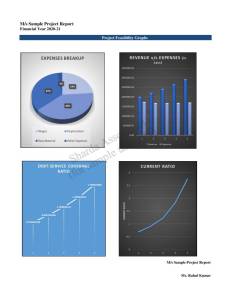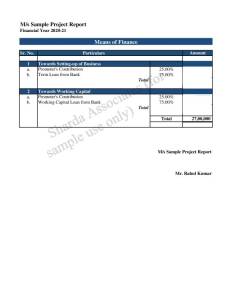Project Report For LED Bulb Manufacturing
Introduction
Project report for LED Bulb Manufacturing business is as follows.
LED stands for Light Emitting Diode. An LED bulb is a type of light bulb that uses light-emitting diodes to produce light. LED bulbs are known for their energy efficiency, durability, and long life span.
They consume less energy compared to traditional incandescent bulbs, and they last much longer. LED bulbs can also produce a variety of colors, making them suitable for a range of applications.
LED bulbs work by passing an electrical current through a semiconductor material. This process causes the electrons in the material to release energy in the form of photons, which create visible light.
Unlike incandescent bulbs, which produce light by heating a filament, LEDs don’t generate heat as a byproduct, making them more efficient.
LED bulbs come in a range of shapes and sizes, and they can be used in a variety of applications. Some LED bulbs are designed to be used in standard light fixtures, while others are designed for specialized applications.
For example, some LED bulbs are designed for outdoor use and are weatherproof, while others are designed for use in enclosed fixtures.
One of the advantages of LED bulbs is that they are more durable than traditional incandescent bulbs. They are less prone to breaking, and they can withstand shock and vibration better.
Additionally, LED bulbs don’t contain the toxic chemicals found in traditional incandescent bulbs, making them more environmentally friendly.
Another advantage of LED bulbs is that they are very energy efficient. They consume up to 80% less energy than traditional incandescent bulbs, which means they can save you money on your energy bills.
They also last much longer than incandescent bulbs, with some LED bulbs lasting up to 25 years.
Overall, LED bulbs are a great choice for anyone looking for an energy-efficient, durable, and long-lasting light source. While they may be more expensive than traditional incandescent bulbs, the savings you’ll see in your energy bills and the longevity of the bulbs make them a cost-effective choice in the long run.
Market Potential Of LED Bulb Manufacturing
According to a report by Market Research Future, the global LED bulb market size was valued at $61.5 billion in 2020 and is expected to reach $103.5 billion by 2027, growing at a CAGR of 7.2% during the forecast period.
The market size of LED bulbs has been growing rapidly in recent years, driven by several factors, including energy efficiency, long lifespan, and environmental concerns.
The increasing demand for energy-efficient lighting solutions is the primary driver of the LED bulb market. LED bulbs consume significantly less energy compared to traditional incandescent and fluorescent bulbs, resulting in lower electricity bills and reduced carbon emissions. Additionally, governments around the world are promoting the adoption of LED bulbs through various initiatives, such as subsidies, tax incentives, and awareness campaigns, further boosting the market growth.
Another factor driving the LED bulb market is the long lifespan of LED bulbs. LED bulbs last up to 25,000 hours, which is significantly longer than traditional bulbs, resulting in fewer replacements and lower maintenance costs. This has led to increased adoption of LED bulbs in commercial and industrial settings, where lighting is required for long hours.
The LED bulb market is also driven by environmental concerns, as LED bulbs do not contain hazardous materials, such as mercury, which is found in fluorescent bulbs. Additionally, LED bulbs are recyclable, further reducing their environmental impact.
The LED bulb market is segmented by product type, application, and geography. The product type segment includes A-type, MR16, PAR, and others. The A-type LED bulb segment dominates the market, accounting for the majority of the market share, owing to their wide range of applications in residential and commercial settings.
The application segment includes indoor and outdoor lighting, automotive lighting, backlighting, and others. The indoor lighting segment dominates the market, owing to the increasing adoption of LED bulbs in residential and commercial settings.
Geographically, the LED bulb market is segmented into North America, Europe, Asia-Pacific, and the rest of the world. Asia-Pacific dominates the market, owing to the increasing demand for energy-efficient lighting solutions in countries such as China, India, and Japan.
In conclusion, the LED bulb market is growing rapidly, driven by energy efficiency, long lifespan, and environmental concerns. The market is expected to continue growing in the coming years, fueled by government initiatives and increasing adoption in residential, commercial, and industrial settings.
Project Report Samle On LED Bulb Manufacturing
Need Help?
Create 100% Bankable Project Report





